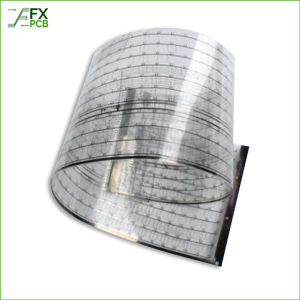
In today’s fast-paced world of electronics manufacturing, ensuring the quality and reliability of electronic products is paramount. One crucial step in achieving this goal is the In-Circuit Test (ICT). This comprehensive guide explores the concept of In-Circuit Testing, its significance in electronics manufacturing, the technology behind it, ICT testing methods, and the essential components like ICT testers and fixtures. By the end, you’ll have a deep understanding of ICT and how it contributes to the production of high-quality electronic devices.

The modern-day electronics world depends heavily on the Printed Circuit Boards (PCBs) as its backbone. A PCB is a medium to transfer the current through its copper pathway and it dissipates the heat to keep the tiny yet highlycomplex electronic equipment on it in perfect condition.
If you are to get the best PCBA and PCB for your digital devices, you have to know this PCB assembly process thoroughly. FX PCB with its years of experience understands this need and thus, we present you the detailed guideline.
FX PCB dont follow the standerd manufacturing process is no exception to it. Our process includes solder pasting on the PCB base, placing the electronic components in the right place, soldering them with the PCB, checking the accuracy, final inspection, and delivery to customers.
In-Circuit Test, often abbreviated as ICT, is a vital quality control process in the electronics manufacturing industry. It involves testing individual components and connections on a populated printed circuit board (PCB) to ensure they function correctly. The primary objective of ICT is to detect defects like open circuits, short circuits, incorrect component values, and other manufacturing faults that may lead to malfunctions or failures in the final product.
In-Circuit Testing operates on the principle of assessing electrical characteristics at specific points on the PCB, ensuring that each component functions as intended within the larger circuit. This meticulous examination of the PCB’s integrity plays a pivotal role in maintaining product quality.
The significance of In-Circuit Testing cannot be overstated. In an era where electronic devices are an integral part of our lives, ensuring their reliability and functionality is crucial. ICT helps manufacturers identify defects early in the production process, reducing the likelihood of costly recalls and customer dissatisfaction. It also enhances the overall quality of the final product, leading to improved customer trust and brand reputation.
The cost savings achieved by identifying and addressing defects before they reach the final assembly stage are substantial. ICT ultimately ensures that consumers receive electronic products that are not only functional but also safe and durable.
ICT relies on advanced technology to test the myriad of components on a PCB. Test probes, which are small, precisely engineered pins, make contact with test points on the board. These probes are connected to a test system that can apply voltages, measure currents, and monitor signals to evaluate the performance of components like resistors, capacitors, and integrated circuits.
Modern ICT systems are equipped with sophisticated software that allows for precise control and automation of the testing process. This ensures consistency and repeatability across multiple boards and manufacturing runs. Furthermore, advanced algorithms can analyze test data to detect subtle defects that might elude manual inspection.
There are two primary methods of In-Circuit Testing: analog and digital. Analog ICT involves measuring electrical properties of components, such as resistance and capacitance, to identify defects. This method is particularly effective in identifying subtle issues in passive components like resistors and capacitors.
Digital ICT, on the other hand, uses digital signals to stimulate and monitor the behavior of components. This approach is well-suited for digital components like microcontrollers, memory chips, and other integrated circuits. By sending specific input signals and comparing the measured responses against expected values, digital ICT can quickly identify defects such as incorrect logic states or malfunctioning components.
The choice between analog and digital ICT depends on the nature of the PCB and the components it contains. Many modern ICT systems offer a combination of both methods to comprehensively evaluate all aspects of the PCB’s functionality.
In-Circuit Testing (ICT) offers a range of advantages in electronics manufacturing. These advantages contribute to improved product quality, reduced production costs, and enhanced efficiency in the manufacturing process. Here are some key advantages of In-Circuit Testing:
High Fault Coverage: ICT provides high fault coverage, meaning it can detect a wide range of defects in electronic assemblies, including open circuits, short circuits, incorrect component values, and missing components. This comprehensive fault detection capability ensures that defective products are identified early in the production process.
Early Defect Detection: ICT is typically performed at an early stage of production, often right after PCBA. This allows manufacturers to detect defects before further assembly or integration steps, reducing the cost and effort required to rectify issues. Early detection also minimizes the likelihood of defects propagating to subsequent stages.
Reduced Rework Costs: Identifying and rectifying defects early in the manufacturing process reduces the need for extensive rework or costly recalls. This results in substantial cost savings, as addressing defects at later stages can be significantly more expensive.
Improved Product Reliability: By ensuring the integrity of each component and connection on a PCB, ICT contributes to the overall reliability of electronic products. This is especially crucial in industries where product failure can have severe consequences, such as aerospace, automotive, and medical devices.
Consistency and Repeatability: ICT tests are executed with precision and consistency, regardless of the operator. This repeatability eliminates human error and provides consistent and reliable results across multiple production runs.
Data Logging and Traceability: ICT systems often include data logging capabilities, allowing manufacturers to record test results for each PCB. This traceability is essential for quality control and can help identify trends and patterns in manufacturing defects.
Customizable Testing: ICT systems can be customized to meet the specific requirements of different PCBs and product lines. This flexibility ensures that the testing process is tailored to the unique characteristics of each assembly.
Cost-Effective for High-Volume Production: ICT is well-suited for high-volume production because it can quickly and accurately test large quantities of PCBs. Automated ICT systems can run continuously, contributing to efficient mass production.
Complementary Testing: While ICT is excellent at detecting certain types of defects, it can be complemented with other testing methods like Functional Testing. This combination ensures comprehensive testing of both individual components and the overall system’s functionality.
Process Improvement: By analyzing ICT data, manufacturers can identify areas of improvement in their production processes. This continuous feedback loop enables process optimization and further enhances product quality.
Reduced Debugging Time: When defects are detected, ICT provides detailed information about the location and nature of the problem. This information accelerates the debugging process, allowing for faster issue resolution.
Regulatory Compliance: In industries subject to strict regulatory requirements, such as medical devices and aerospace, ICT helps manufacturers meet compliance standards by ensuring the quality and reliability of their products.
Enhanced Customer Satisfaction: Ultimately, the reliability and quality of the end product improve customer satisfaction and brand reputation. Customers can trust that the electronic devices they purchase have undergone rigorous testing and meet high-quality standards.

The heart of any In-Circuit Testing system is the ICT tester. These specialized machines are equipped with the necessary hardware and software to carry out the testing process efficiently. ICT testers can generate test patterns, measure responses, and provide detailed reports on the status of each component on the PCB. They come in various configurations, from benchtop testers for low-volume production to high-throughput automated systems for mass production.
ICT testers are not only responsible for executing the tests but also for interpreting the results. Through extensive data analysis, they can pinpoint the location and nature of defects, enabling rapid troubleshooting and corrective action. This capability significantly reduces the time and resources required to rectify production issues.
In-Circuit Testing fixtures are custom-designed interface systems that hold and connect the PCB to the ICT tester. These fixtures ensure that the test probes make reliable contact with the PCB’s test points. They are critical to the accuracy and repeatability of the testing process. Well-designed fixtures not only facilitate the testing but also help reduce setup time and improve overall efficiency.
Fixtures are tailored to the specific PCB being tested, and they must accommodate the board’s unique layout and components. This customization ensures that the ICT tester can access all the necessary test points and that the testing process is efficient and thorough.
While In-Circuit Testing is a powerful tool for quality control, it does have its limitations. Some of these limitations include the inability to detect certain defects like intermittent faults and the high initial setup costs associated with custom fixtures. Manufacturers must weigh the benefits of ICT against these limitations when deciding on their testing strategies.
Intermittent faults, for example, can be challenging to detect because they may only occur under specific conditions or during temperature fluctuations. Addressing such issues often requires supplementary testing methods, such as functional testing, which assesses the entire electronic system’s performance.
As technology continues to evolve, so does In-Circuit Testing. Future advancements in ICT may include improved test speeds, greater accuracy, and enhanced defect detection capabilities. Additionally, the integration of artificial intelligence and machine learning algorithms may enable ICT systems to adapt and learn from previous testing experiences, further enhancing their effectiveness.
The ongoing miniaturization of electronic components and the increasing complexity of PCBs present exciting challenges and opportunities for ICT. Manufacturers will continue to rely on ICT to ensure product quality while adapting to the ever-changing landscape of electronic manufacturing.
In-Circuit Testing, or ICT, is an indispensable part of modern electronics manufacturing. It plays a pivotal role in ensuring the quality and reliability of electronic products that we rely on daily. With the help of ICT testers, fixtures, and advanced testing methods, manufacturers can identify and rectify defects early in the production process, ultimately leading to better products and greater customer satisfaction. As technology continues to advance, the future of ICT holds exciting possibilities for even more efficient and effective testing processes, further cementing its role in the world of electronics manufacturing.
In conclusion, In-Circuit Testing is not just a quality control measure; it is a cornerstone of modern electronics production, providing the assurance that the electronic devices we depend on will perform flawlessly and reliably. As we continue to innovate and push the boundaries of technology, ICT will undoubtedly evolve alongside, continuing to serve as a vital tool for manufacturers and a guarantee of excellence for consumers.
Also Read: Glass PCB – Ceramic PCB

I am Peter Gong. I have been working in PCB and PCBA industry for 15+ years now. I have been a part of the PCB revolution with my dedication to circuit board technologies and creative ideas. I write in FX PCB to impart my knowledge on PCB and PCBA for all circuit board lovers, manufacturers, and users.
WhatsApp us